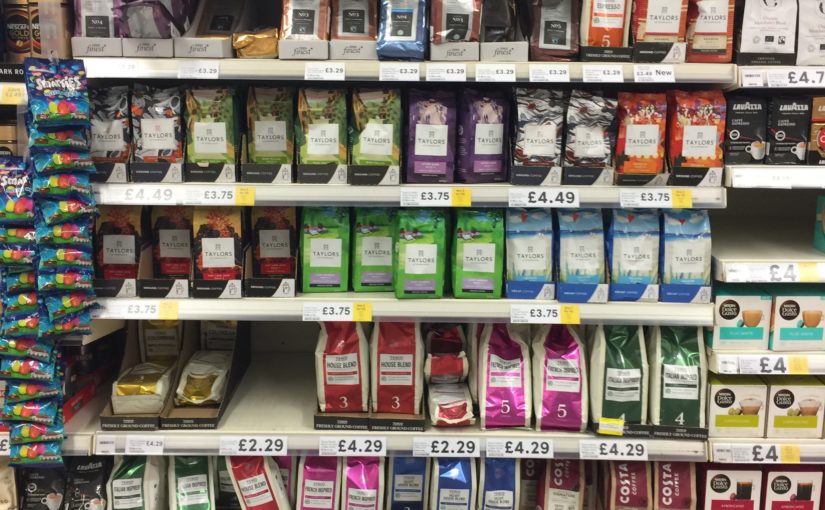Coffee, the lifeblood of millions, has always been more than just a beverage. It’s a global commodity that reflects a complex interplay of factors ranging from geopolitics and weather patterns to consumer habits and market indices. In recent times, coffee prices have seen significant fluctuations, driven by a confluence of global forces. Let’s delve into how geopolitics, changing weather patterns, and distribution challenges are impacting coffee prices worldwide, and what this means for consumers and businesses alike.
Geopolitics: The Global Chessboard
Geopolitics plays a crucial role in determining coffee prices, as the majority of coffee production is concentrated in politically sensitive regions. Brazil, the world’s largest coffee producer, has been dealing with political instability and economic challenges that have disrupted coffee production and export processes. Meanwhile, ongoing tensions in the Middle East and Africa, where several key coffee-producing nations are located, have further strained the global coffee supply chain.
The conflict in Ukraine, for instance, has indirectly affected coffee prices by exacerbating global supply chain disruptions. The sanctions on Russia and the resulting energy crisis have led to increased costs in shipping and transportation, impacting coffee exports from regions like Africa and South America. These geopolitical tensions have added a layer of unpredictability to the coffee market, making prices more volatile.
Changing Weather Patterns: The Climate Crisis
Weather patterns have always been a significant factor in agricultural production, and coffee is no exception. The past few years have seen increasingly erratic weather conditions, from droughts in Brazil to unseasonal frosts and floods in Vietnam. These extreme weather events have drastically reduced coffee yields, leading to supply shortages and pushing up prices.
Climate change is a growing concern for coffee farmers, as rising temperatures and changing rainfall patterns threaten the viability of coffee cultivation in traditional growing regions. The Intergovernmental Panel on Climate Change (IPCC) warns that by 2050, the area suitable for coffee production could be reduced by up to 50%. This long-term threat adds pressure on current prices as investors and producers anticipate future supply constraints.
Distribution Challenges: The Baltic Dry Index and Shipping Woes
The distribution of coffee, like many other commodities, has been heavily impacted by global shipping challenges. The Baltic Dry Index (BDI), a measure of shipping rates for bulk commodities, has seen significant volatility in recent months. As the BDI rises, indicating higher shipping costs, the cost of transporting coffee from producing countries to consumer markets also increases.
The COVID-19 pandemic led to severe disruptions in global shipping, causing container shortages and port congestions that are still being felt today. These logistical issues have driven up the cost of coffee, as producers and exporters struggle to get their products to market efficiently. The combined effect of higher shipping costs and delayed deliveries has put additional upward pressure on coffee prices.
Market Indicators: The ICE Coffee Index
The Intercontinental Exchange (ICE) Coffee Index, a key benchmark for coffee futures, has reflected these global challenges. Over the past year, the ICE Coffee Index has experienced sharp increases, driven by fears of supply shortages due to weather disruptions and geopolitical tensions. Speculative trading has further amplified these price movements, as investors react to the latest news and forecasts.
As coffee prices on the ICE Coffee Index rise, the cost is inevitably passed on to consumers, leading to higher prices for your daily cup of coffee. This trend has prompted coffee companies to reconsider their pricing strategies and supply chain management practices, as they navigate the uncertain landscape.
Local Consumer Habits: The Productivity Puzzle
On a more local level, changing consumer habits are also influencing coffee prices. The COVID-19 pandemic has led to a shift in how and where people consume coffee. With more people working from home, there has been an increase in demand for premium coffee products that can be brewed at home. This shift has driven up prices for high-quality beans, as consumers are willing to pay more for a better coffee experience.
Moreover, the trend towards sustainability and ethical sourcing has also impacted prices. Consumers are increasingly prioritizing fair trade and organic coffee, which often comes with a higher price tag. This shift in consumer preferences is pushing the market towards higher-priced, ethically sourced coffee, further contributing to the overall increase in coffee prices.
Conclusion: The Future of Coffee Prices
The convergence of global geopolitical tensions, changing weather patterns, distribution challenges, and evolving consumer habits has created a perfect storm for coffee prices. As these factors continue to evolve, the coffee market is likely to remain volatile, with prices subject to sudden spikes and fluctuations.
For consumers, this means higher prices at the checkout, but also an opportunity to reflect on the value of a commodity that is deeply intertwined with global issues. For businesses, it’s a call to adapt to a rapidly changing market by investing in more resilient supply chains and exploring sustainable sourcing options.
In the end, the future of coffee prices will depend on how the world addresses these interconnected challenges. As we navigate this uncertain landscape, one thing is clear: the humble coffee bean is at the center of a global narrative that affects us all.

